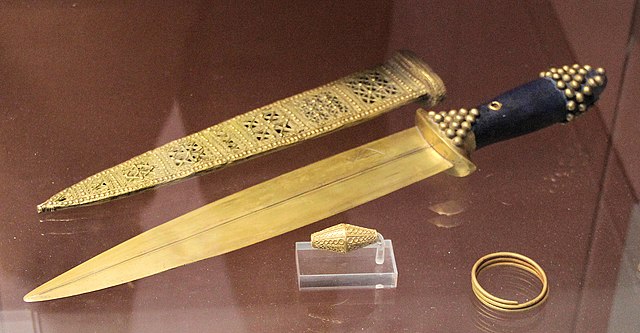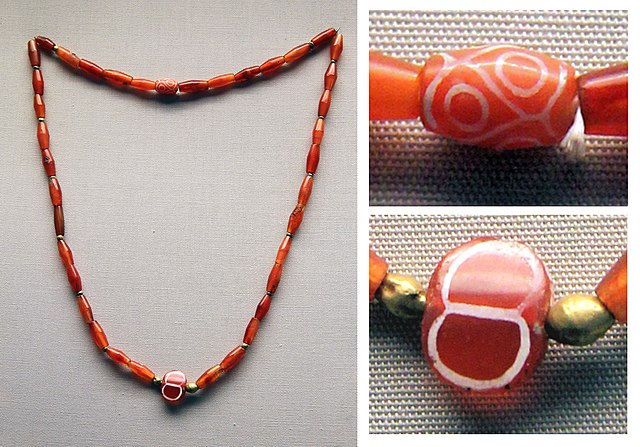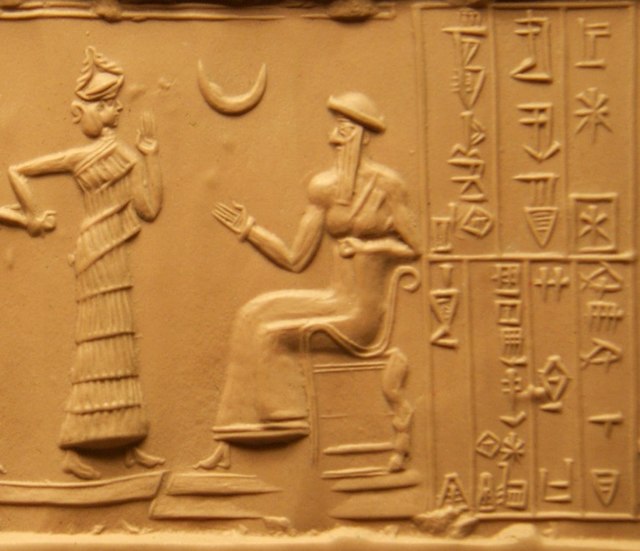The First Dynasty of Ur was a 26th-25th century BCE dynasty of rulers of the city of Ur in ancient Sumer. It is part of the Early Dynastic period III of the history of Mesopotamia. It was preceded by the earlier First Dynasty of Kish and the First Dynasty of Uruk.
Golden helmet of Meskalamdug, possible founder of the First Dynasty of Ur, circa 2500 BCE.
Gold objects from tomb PG 580, Royal Cemetery at Ur.
The etched carnelian beads in this necklace from the Royal Cemetery dating to the First Dynasty of Ur were probably imported from the Indus Valley. British Museum.
Lapis lazuli was likely imported from the Badakhshan area of Afghanistan.
Ur was an important Sumerian city-state in ancient Mesopotamia, located at the site of modern Tell el-Muqayyar in south Iraq's Dhi Qar Governorate. Although Ur was once a coastal city near the mouth of the Euphrates on the Persian Gulf, the coastline has shifted and the city is now well inland, on the south bank of the Euphrates, 16 km (10 mi) from Nasiriyah in modern-day Iraq. The city dates from the Ubaid period c. 3800 BC, and is recorded in written history as a city-state from the 26th century BC, its first recorded king being King Tuttues.
The name 𒋀𒀊𒆠 URIM5KI for "Country of Ur" on a seal of King Ur-Nammu
Enthroned King Ur-Nammu (c. 2047–2030 BC)
Gold helmet of King of Ur I Meskalamdug, c. 2600–2500 BC
Mesopotamian female deity seated on a chair, Old-Babylonian fired clay plaque from Ur








